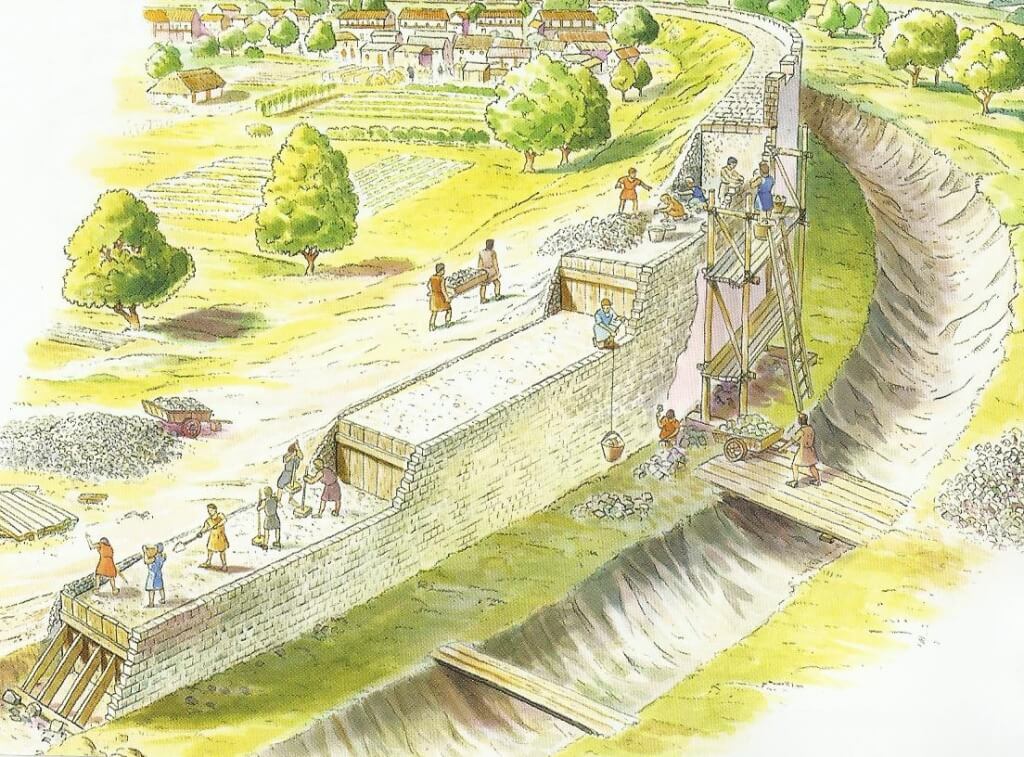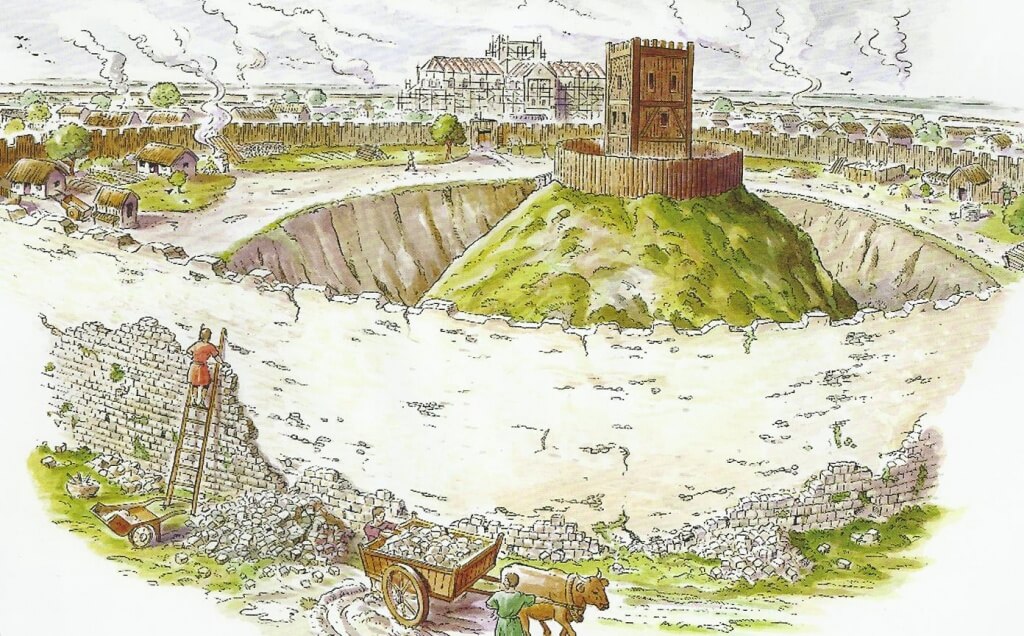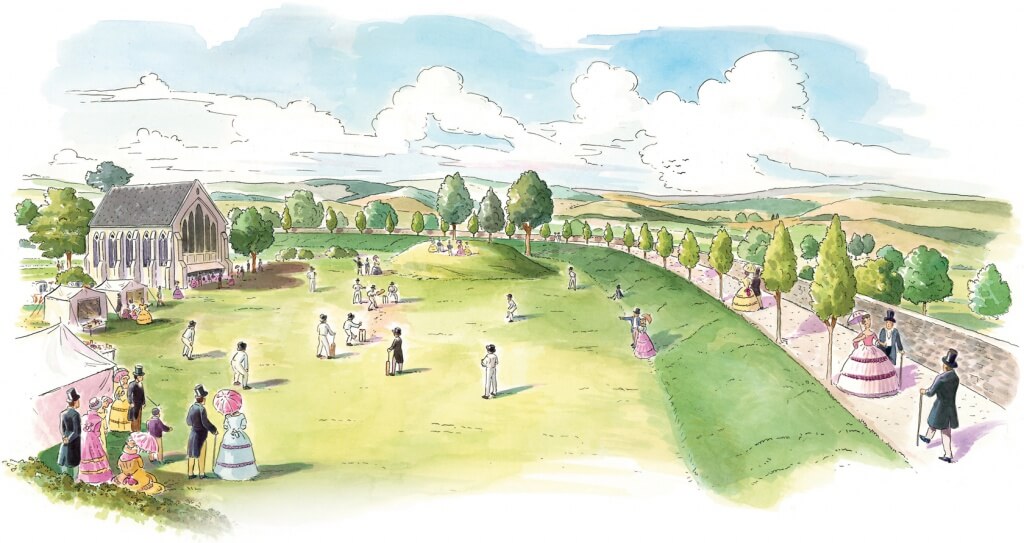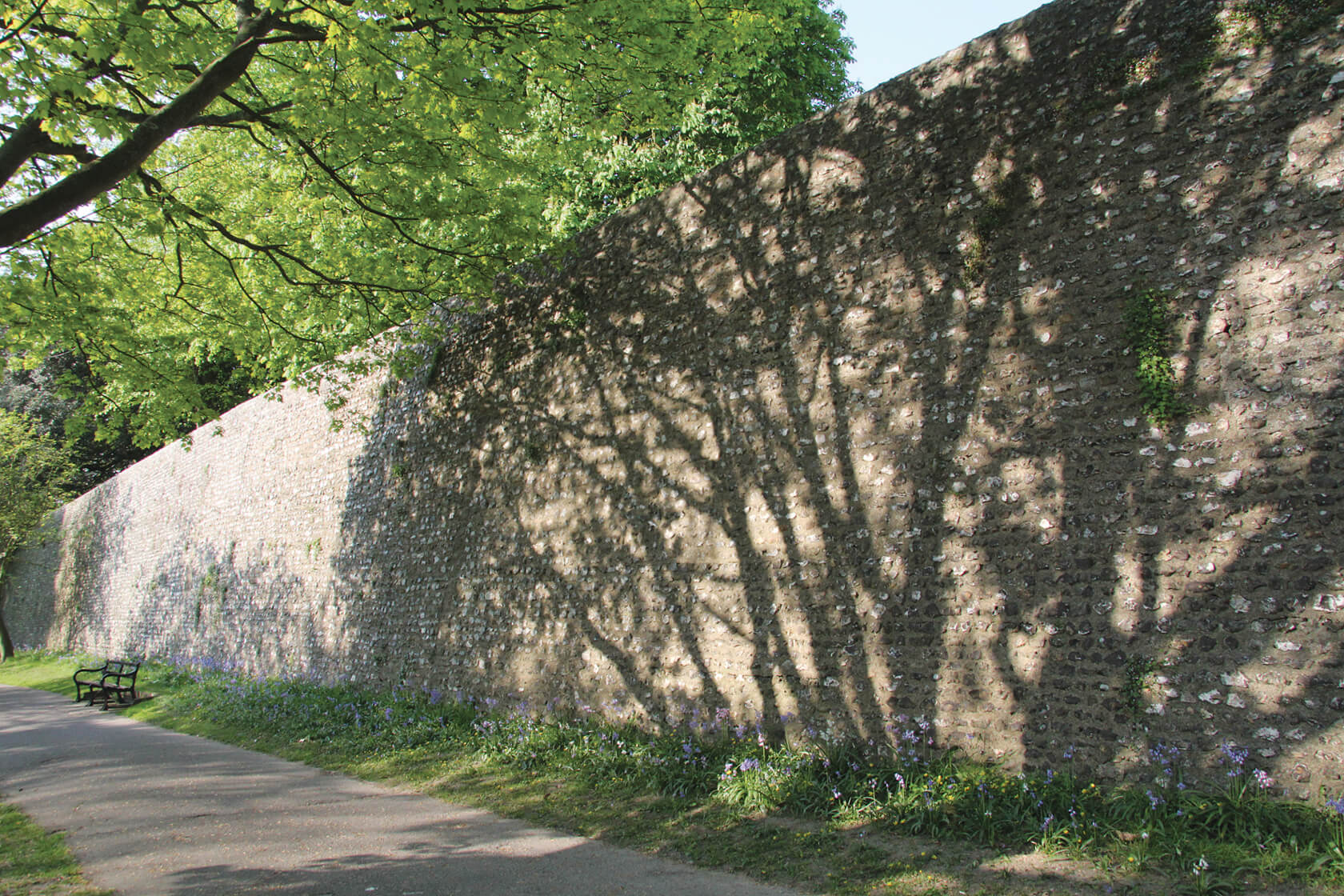A brief history of the walls
The walls, as we see them today, date from the 3rd century, built to defend the prosperous town against coastal raiders, and to protect its trade and status. Building the 7-metre high walls, with their tall bastions and gates, was a major task, involving some 5000 cubic metres of facing stones and 20,000 cubic metres of chalk and flint fill. For 200 years the walls successfully protected Roman Chichester.

For several centuries after the Romans the city decayed, until first Alfred the Great in the 9th c and then William the Conqueror in the 11th c saw the strategic value of Chichester as a defensible administrative, commercial and religious centre. The walls and gates were restored and the city revitalised. A castle was built in the north east quadrant and a great cathedral in the south west.

Chichester remained garrisoned and the walls defended for 600 years until after the Civil War in the 17th c. From then on the city prospered quietly as a market town without growing much, and the walls became places to promenade and to enjoy the pleasant views across the city and outwards to the harbour and the South Downs. The walls are now a scheduled monument, and are kept in good order for today’s residents and visitors to enjoy an elevated stroll around this beautiful city.

<!–
Walk around the Chichester Walls
–>






